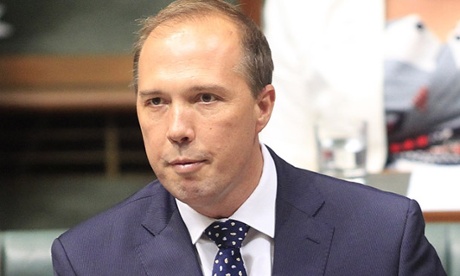Government’s ambitious HIV strategy aims to reduce the sexual transmission of HIV by 50% by 2015

Australians will soon be able to test themselves for HIV after the federal government announced that restrictions preventing the manufacture and sale of self-testing kits had been lifted.
The government has unveiled its 2014-2017 national strategies on HIV, hepatitis B and C, sexually transmissible infections (STIs) and a special strategy on targeting blood-borne viruses and STIs in the Indigenous community.
Its “ambitious” HIV strategy aims to reduce the sexual transmission of HIV by 50% by 2015, as a key step towards a 2020 elimination target.
To help it achieve this goal the government has removed a restriction preventing the manufacture and sale of HIV home self-test kits.
The health minister, Peter Dutton, said on Monday that companies can now apply to the Therapeutic Goods Administration (TGA) for approval to supply their test kits, which will be able to be sold direct to customers.
Dutton also announced that from next July those living with HIV will be able to access their medicine from a pharmacy of their choice, rather than a hospital.
The head of infectious diseases at the Alfred hospital in Melbourne, Professor Sharon Lewin, said the HIV strategy set some “ambitious targets”.
“Australia has taken a rather bold step working towards eliminating new HIV infections by 2020,” she said.
“The increased availability of testing and greater ease of accessing treatment through community-based pharmacies will both greatly assist in reducing new infections.”
There were 1,200 new HIV infections last year and the highest prevalence of HIV in Australia is still among gay men.
“A big challenge will be in eliminating new infections in men who have sex with men,” Lewin said.
Meanwhile, the government plans to halve the incidence of new hepatitis C infections by 2017.
Chronic hepatitis C affects about 230,000 people in Australia and is a leading cause of liver cancer.
Dutton said the TGA recently approved a new hepatitis C treatment called sofosbuvir (Sovaldi, Gilead).
This treatment can reduce treatment time and increase cure rates for hepatitis C to 90%.
Hepatitis Australia, which worked with the government to develop the national strategies, said immediate action was needed to halt the rising rates of new infections and “appallingly low levels of treatment”.
“Without urgent investment in rigorous treatment programs, Australia will continue to fail in its efforts to halt escalating rates of serious liver disease due to chronic hepatitis B or C,” said Hepatitis Australia’s acting chief executive, Kevin Marriott.
